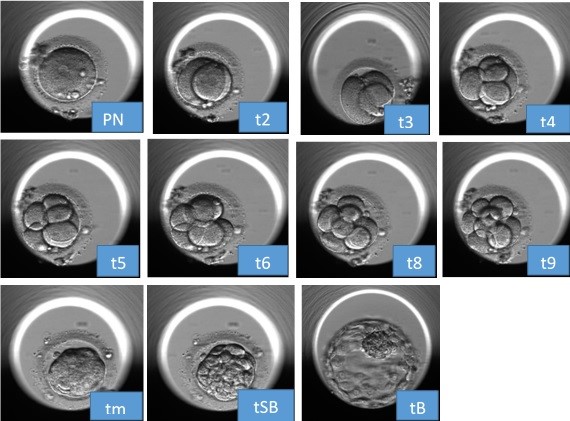
EMBRYO
The fertilized egg that emerges by combining the sperm cell of the man and the egg cell of the woman with natural methods or necessary operations is called the “embryo”.
IN SELECTION OF EMBRION TO RESULT WITH PREGNANCY
ARTIFICIAL INTELLIGENCE ERA

In IVF treatments, the selection of the embryo with the highest potential to create pregnancy and result in delivery is very important.
In recent years, together with embryo monitoring devices, we have been able to reach the necessary criteria for this selection (morphology, that is shape and morphokinetics, that is, development) by using accelerated video images. However, the human factor is still involved in the embryo selection process. In order to completely remove the effect of the human factor in embryo selection, the embryoscope device, which selects embryos with artificial intelligence, has been developed.
A large number of embryo images transferred to patients over the years in IVF treatments were taken from the old generation embryoscope device, compared with pregnancy status and standardized with the obtained data. This method, known as Artificial Intelligence, is one of the newest technologies that uses this data.
Methods of Selection of Embryo to Achieve Pregnancy
Classical embryo evaluation methods use videos consisting of instant microscope image tracking or time-lapse photo shoots on the division stages and shape of the embryo.
1- Morphology Detection with Instant Microscope View

1: Inner Cell Division of the Embryo
2: Outer Cell Division of the Embryo
3: Diameter of Embryo
Evaluation of embryo quality in embryos that do not use artificial intelligence system is based on the criteria of evaluating the embryo’s Inner Cell Section, Outer Section and Embryo Diameter in terms of shape. In this evaluation, the day of egg collection and microinjection is considered as Day 0 and Day 1 is Day 2 Day 3. Day 4, Day 5, the embryo is taken out of the incubator once and the embryo quality is graded by evaluating the diameter of the embryo, the inner cell and outer cell parts, under the microscope, and the embryo with the highest chance of pregnancy is tried to be determined.
2- Embryo Selection with Videos Consisting of Time-Lapse Photographs (Embryoscope);

In the old system embryoscope device, in addition to the categorization of the embryo according to its diameter ratio, inner cell amount, cell number and structure, trophectoderm (outer cell section) cell number and structure, without taking the embryo out of the incubator; cleavage timings, fragmentation rates, blastomere sizes, effects of direct cleavage (direct cleavage) and reverse cleavage (reverse cleavage) are analyzed by turning tens of photographs taken every 20 minutes into video. The aim is to reach the embryo with a high chance of pregnancy by using more data.
As can be seen, current evaluation methods are made with parameters based on the shape of the embryo or morphology (shape) and morphokinetic (development) images using time-lapse video images. However, since these evaluations may differ according to the people who apply them, inter-observer variability can lead to misleading results. The fully automated and standardized artificial intelligence method, known as Artificial Intelligence, is one of the newest technologies in the field of reproductive medicine, which aims to simultaneously evaluate a large number of embryos using raw video images in a continuous tracking system (embryoscope).
3- Embryo Selection with Artifical Intelligence

Artificial intelligence, one of the most popular topics of developing technology, has started to be used in the medical-health field as well as making its effects felt in every field. As we explained above, an embryologist needs to use and analyze a large number of data and make this evaluation at the same time in order to select a good embryo.
Embryo selection with artificial intelligence started to be useful at this point. A software with a learning capacity (IDAscore) and an accompanying device (embryoscope) analyze the necessary data instead of the embryologist, allowing the selection of the embryo with the highest probability of adherence.
There are many scientific publications on how artificial intelligence, which is a very recent development, affects and changes IVF-ICSI results. Scientific publications show that artificial intelligence evaluates the embryos in a very short time and provides success in the selection of the embryo with the highest pregnancy potential (Kan-Tor et al. 2020), increases the rates of clinging pregnancy and taking a baby home (Tran et al. 2018; Friedenthal et al. 2021). ) may allow the selection of genetically normal embryos without the need for PGD (Chavez-Badiola et al. 2020; Lee et al. 2021).
